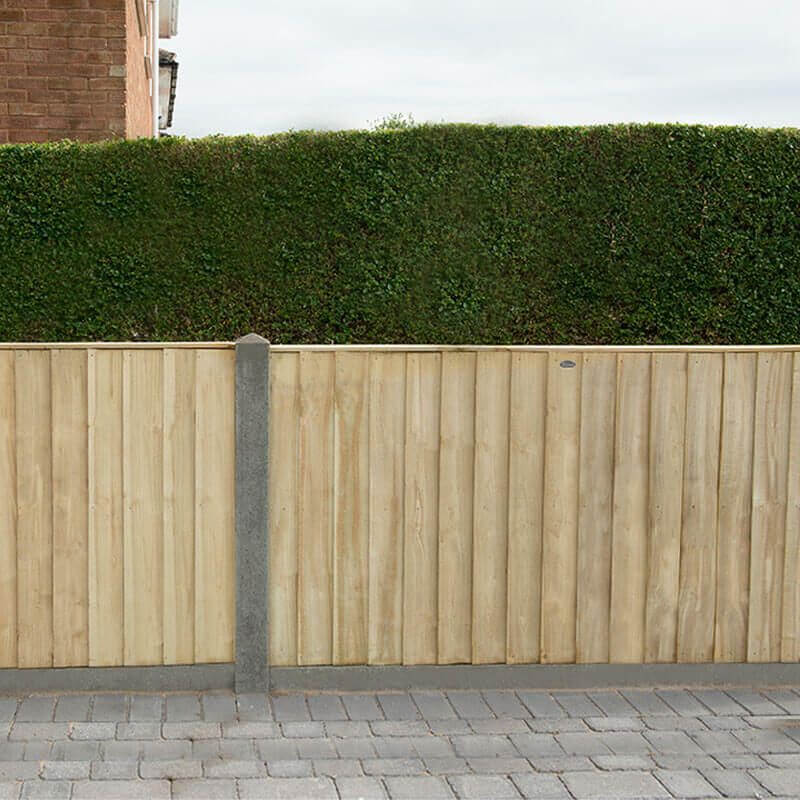
Planning a new fencing run can be more challenging than you initially think. What are the fence height restrictions, and do you need fence planning permission, for example? Armed with our fence height loopholes guide, we’ll advise you on how to get around fence height restrictions UK regulatory bodies impose. Read on to learn more.
Navigating fence height regulations
We tend to treasure our privacy here in the UK and it is the reason why many of us insist on putting a fence around our garden. Or we at least want some sort of barrier between ourselves and our neighbours or passing pedestrians.
But the problem often lies in how high we want that garden fence to be. That is because there are specific height restrictions for fences. Fortunately, there are a few fence height loopholes some of which we will reveal here.
Understanding UK fence planning permission & height restrictions
You may be wondering what exactly those height restrictions are. Well, permission to even put up a garden fence in the first place, may vary between local authorities. But in the main, when it comes to the maximum fence height of a domestic fence in England (and Scotland), under permitted rights, this must be no higher than two metres (6.5ft) at the back of a property and one metre at the front from the ground level. This is without deploying any of those fence height loopholes we will go on to discuss.
How to add height to existing fences
It may be possible to have a garden fence which exceeds both those stipulations. Only your local authority can decide though. That is because you will have to apply for fence planning permission. The same applies to a garden fence higher than one metre where the property overlooks a motorway. In Scotland, you will need planning permission to build a fence of over a metre high if the property faces a road.
Garden fence planning permission
You should not have too much of a problem receiving fence planning permission for a taller garden fence if you prove that it is necessary. You may need it for a particular privacy issue, for instance, or if it is necessary to secure your property. The only downside is that you may have to wait several months between applying for permission and receiving an answer. This will also prove expensive (up to £200). It may be that a taller fence might also come under Building Regulations, so more approval may be needed.
Failing to get planning permission for a fence higher than that allowed under permitted development rights, can have expensive consequences. You could be asked to remove it via an enforcement notice from your local authority. There is a time limit of around four years for this.
Do fence height loopholes exist in the UK and how to get around fence height restrictions?
Are you wondering how to add height to existing fences in your garden? Here at Buy Fencing Direct, we are aware of certain fence height loopholes you can employ to increase the size of your proposed garden fence. This usually works best if you have not already asked the local authority for fence planning permission and have been refused. In other words, you do not want anyone to be looking too closely at your fencing.
Here are some of our essential guidelines for adding height to existing fences.


Notify the neighbours
Before you do start considering how high you plan to make your fence, and what materials you will use, it always makes sense to let your neighbour know of your intentions – especially if their land borders your own garden. Otherwise, their objections may prove a fly in the ointment, especially if you go on to seek garden fence planning permission.
They may be worried that they will lose light, for instance (something they have a constitutional right to). Or they may already have plans to put up their own fence in the same spot. Notifying the neighbours lets them feel that you are being upfront about your plans and not attempting to ‘pull the wool over their eyes.’
Do this and you are already off to a good start. Not alerting the neighbours can result in arguments and even legal disputes further down the line. In the worst-case scenario, it may even interfere with your wanting to sell your house in the future.
Add height to existing fences creatively
Getting around local authority restrictions often means using creative methods when it comes to fence height loopholes. Many people add a trellis, for instance, while others get the impression – and reality - of a greater height by siting a pergola next to the garden fence. Greenery too, in the form of vines, bushes and a tree or two can also add to the impression of height for the fence. Here are a few tips to legally add height to existing fences.
Add a trellis
Probably the most popular fence height loophole, installing a trellis or latticework at the top of your fence can provide you with an additional 0.6 metres in height. It is certainly the answer to the question of how to add height to existing fences. Just make sure you check with your local authority first that there are no restrictions on their use. There is a decorative benefit too, with trellises especially when bursting with climbing plants adding colour and greenery in the garden.
Grow bamboo
Bamboo grows tall – and quickly. Plant this dense plant beside your fence and it can exceed the height, giving you that additional privacy, you are looking for.
Plant climbing vines
In a similar vein to the bamboo (i.e. you will get growth exceeding the height of the fence), it may be possible to plant climbing vines on your fence (these work well with a trellis on top). This is not just an easy solution for how to add height to existing fences, it is also an excellent aesthetic solution.


Plant a tree
Trees are a natural barrier that grow higher than the legal restrictions allowed and are also eco-friendly. Planting trees (or maybe large shrubs) also encourages local wildlife and improves your garden’s air quality.
Aesthetically pleasing, trees generally are viewed as property enhancing and are welcomed by visitors. It may also be possible to strategically plant a tree alongside your fence, again giving extra privacy when covered in leaves.
Erect a gazebo or pergola
As we mentioned, a gazebo or pergola sitting next to a fence can add extra height to the area of your garden you want to shield but without your having to extend the fence. It is a clever way of getting around the fence planning permission height restrictions and it is also a fantastic way of adding further charm to your garden, as well as getting shade outdoors during scorching summer days.
Build a garden room or shed
A garden room and shed are a most costly alternative to a gazebo or pergola but they also have the advantage of added height, improving privacy when placed alongside your fence. Although there are also particular height restrictions where these are concerned, they are allowed to be built higher than a fence.
Planning variance permits
If you have considered all the above, and none of our fence height loopholes seem appropriate as we discussed earlier, you could also apply for planning permission, click this link for information.
Conclusion: maximising your fence height legally
So, as you see from this article, it is possible to increase the maximum fence height under permitted development rights – without incurring the wrath of your local council’s planning department. You just need to employ some clever fence height loopholes.
Having said that, it is always a good idea to check first what is allowed and to attempt to stay within the regulations. And, if you feel you want to go higher than what is permitted, then do go down the fence planning permission route. Before you do that though, do speak with your neighbours. It may be that they have been wanting a taller fence too. The ideal scenario is when they offer to split the bill with you.
Contact Buy Fencing Direct
Here at Buy Fencing Direct in the UK we can advise on all areas of fencing – not just how to get around local authority restrictions by applying a fence height loophole. Why not take a look at our extensive range of garden fencing, from lattice panels and picket fencing to slatted panels and other forms of contemporary fencing? We also supply fence panels, posts, and gates to buy individually when needed. All can be viewed at our website www.buyfencingdirect.co.uk.
Why not call us today at 0333 003 0515. Or if you prefer, complete the contact form at our contact page. We are also available to text chat anytime during working hours via the Live Chat function.







